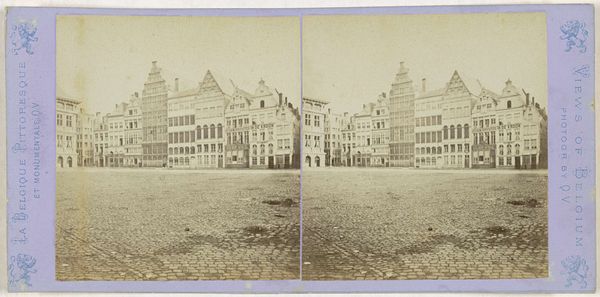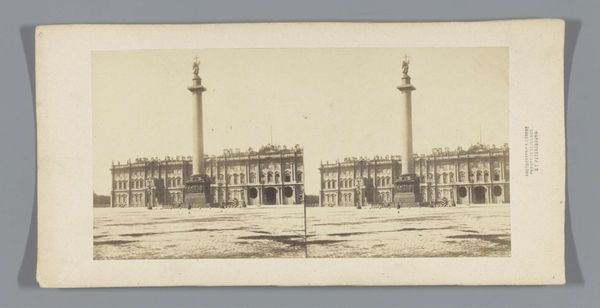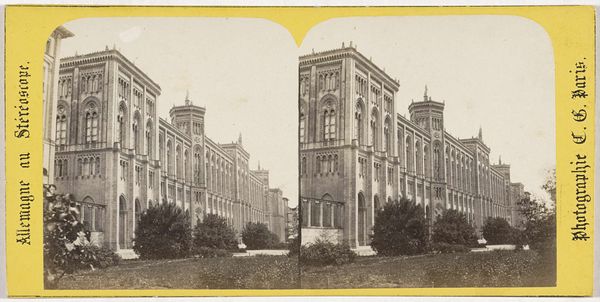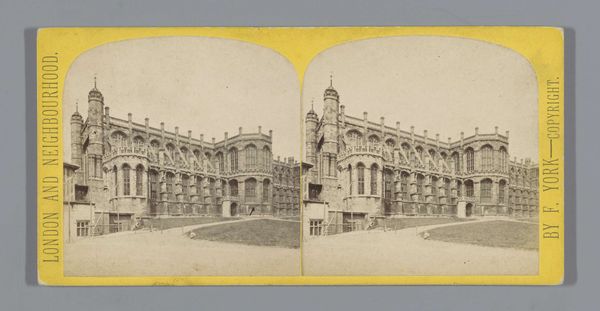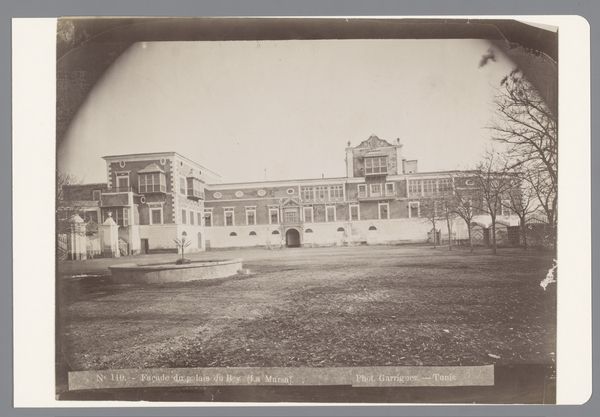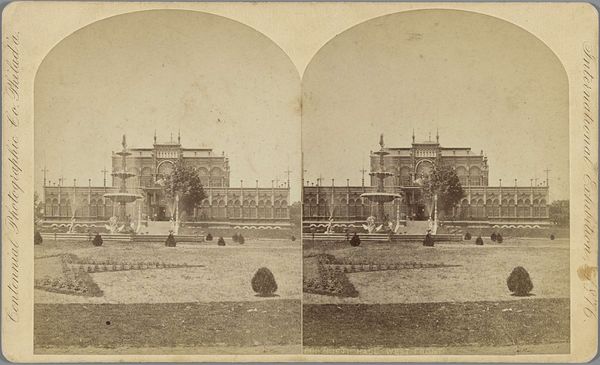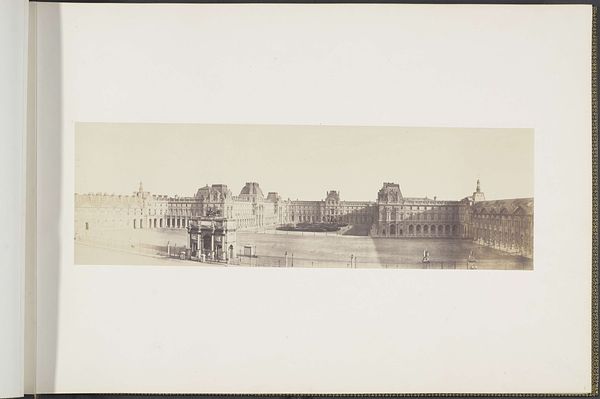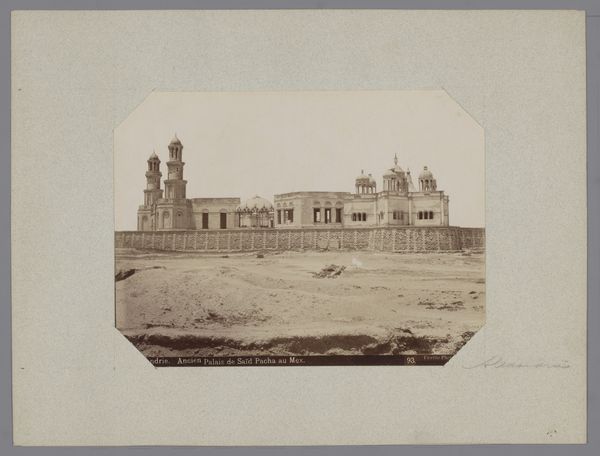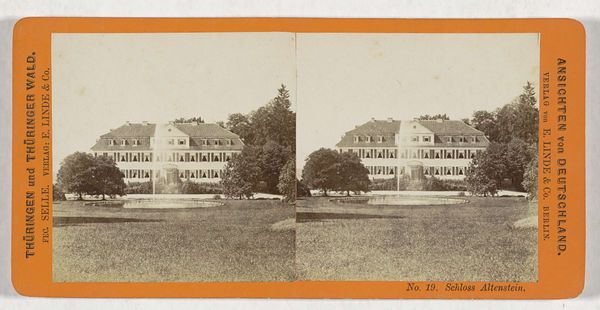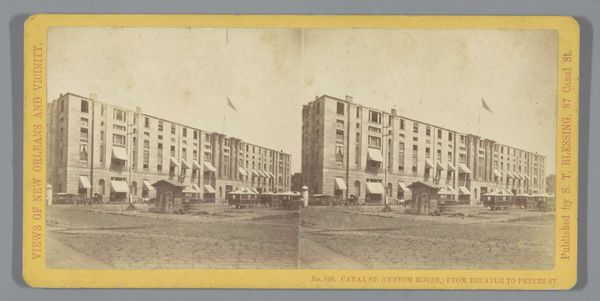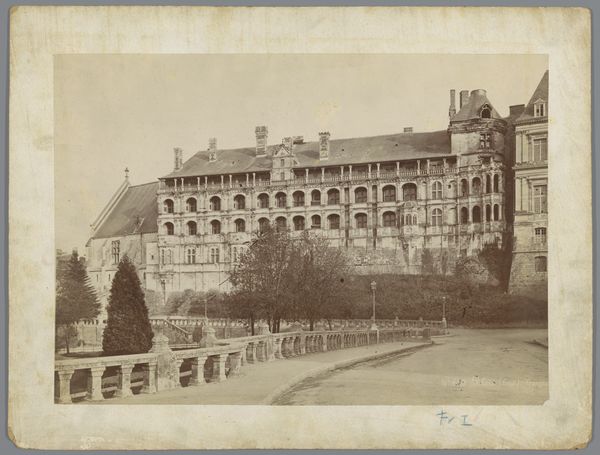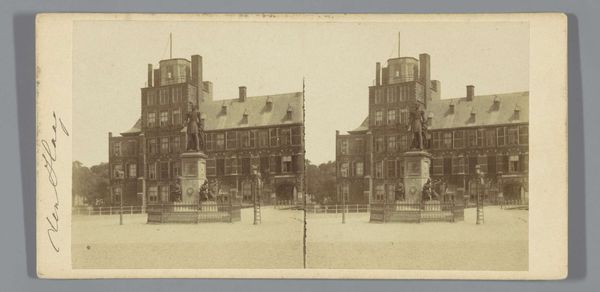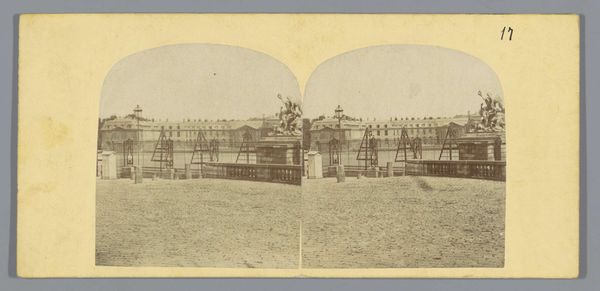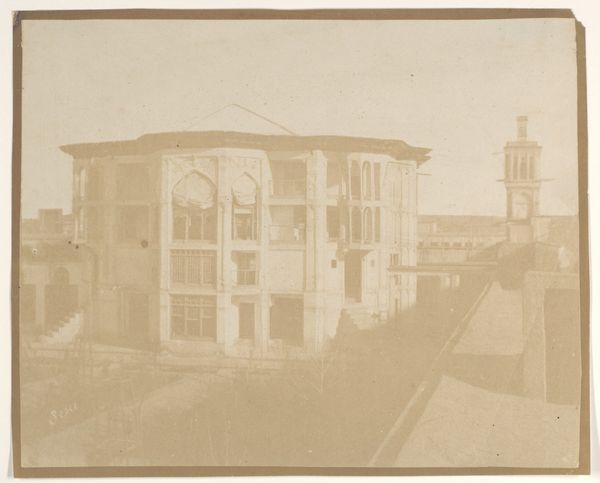
Gezicht op de oostfaçade van het Paleis van de prins-bisschoppen in Luik 1866 - 1870
0:00
0:00
print, photography, albumen-print
# print
#
photography
#
coloured pencil
#
cityscape
#
albumen-print
#
realism
Dimensions: height 86 mm, width 175 mm
Copyright: Rijks Museum: Open Domain
Curator: Looking at this stereo card, “View of the East Façade of the Prince-Bishops' Palace in Liège,” made sometime between 1866 and 1870, I'm struck by how it encapsulates a moment of profound transition. The photographer, Jules Hippolyte Quéval, captured not just a building, but a site steeped in complex power dynamics. Editor: My immediate impression is of its stark grandeur, the almost oppressive weight of the palace looming over what appears to be a construction site. The tonality adds to that solemn feeling. Curator: Indeed. The palace, as the seat of the Prince-Bishops, represented centuries of intertwined religious and secular authority. Quéval’s choice to focus on the façade emphasizes the monumental power structure inherent in the building itself, something that has always fascinated and concerned me. This photograph was produced during a time of great political and social change in Belgium and elsewhere, and it prompts critical reflections on the ways in which architecture serves as both a reflection and a perpetuation of power relations. How do we navigate these visual markers of authority today, understanding the role such symbols have played in maintaining systems of dominance? Editor: Beyond the immediate socio-political connotations, the image evokes older ideas. The colonnaded structure calls to mind Roman forums and basilicas. There's an air of permanence and intended immutability, though time and progress visibly erode it. The scene implies temporal layers and the endurance of symbols of power through centuries, though altered by different contexts. What memories and stories does it hold within its walls? The building becomes a repository. Curator: Precisely. The palace is more than stone and mortar. The presence of construction also speaks to transformation. It embodies how progress impacts tradition, often unsettling established hierarchies. It serves as an invitation to unpack historical narratives and power dynamics that often influence architecture's symbolism and its legacy, highlighting historical realities like oppression, injustice, and resistance. The role of architectural form can also function as a powerful signifier within a larger historical context. Editor: So, the image doesn't just represent the Palace itself, but also speaks about the ongoing nature of human stories: cycles of authority, adaptation, and perhaps, hope for renewal. It becomes a visual palimpsest, where each era writes its chapter upon the foundations of the past. Curator: Yes, Quéval invites us to interrogate history, reminding us that symbols of power are never neutral. Editor: And that even static architecture holds dynamic narratives waiting to be unlocked.
Comments
No comments
Be the first to comment and join the conversation on the ultimate creative platform.
